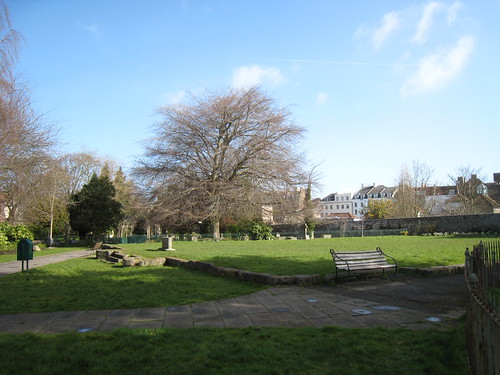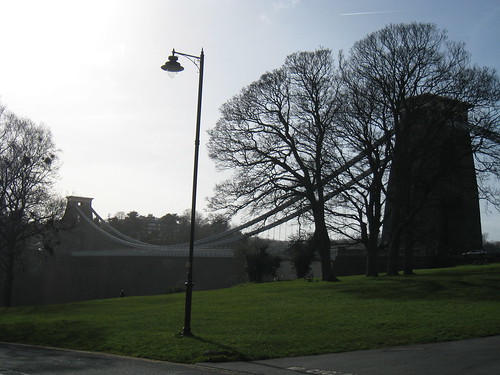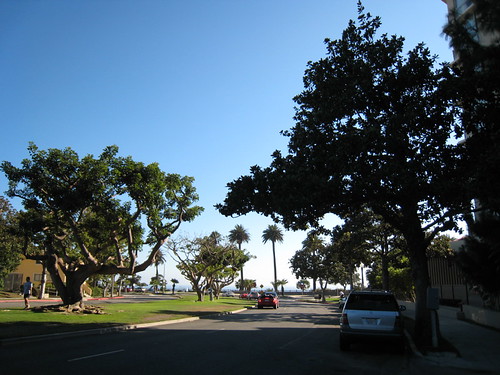With DNA tests becoming more affordable, I decided to take advantage of a deal
Ancestry.com is having with their new genetic testing feature. There are plenty of services out there, with various packages at various prices. However, as a longtime subscriber to Ancestry, I decided to go with loyalty (prompted by a well-promoted discount).
The test results depend on your gender. Men, with X and Y
chromosomes, are able to do both paternal (X) and maternal (Y) tests. Women can only test the maternal line, as they do not have Y chromosomes. My rudimentary scientific understanding tells me that the paternal chromosome represents the genetic lineage of a man’s father’s father’s father’s father’s… and so on. The same goes with the maternal line (a mother’s mother’s mother’s…). Once your DNA has been analyzed, it can be compared with other people in the database to help find common lineages. The test is only as good as the database.
I decided to order the paternal test first, seeing as it was the clearest line I could match up with my own paper research. My string of forefathers were Western European (French/Spanish, most likely
Basque), but if any surprises lay beyond that, the DNA test would bring them up.
Within a week, I received my neatly-packaged kit, which contained a handsome brochure and three cotton swabs. The whole process took a few minutes, not including time to read and re-read the instructions. Gently scraping the inside of my cheeks with each swab, I tried not to drool all over my desk nor accidentally contaminate the swabs with whatever foreign genetic material that might be lurking on my desktop. As my mouth hummed with numbness, I sealed the swabs in a series of carefully-labeled envelopes and mailed them back to the lab.
After about four weeks, the results privately appeared on the Ancestry DNA website. They were exactly what I expected. A handsome write-up described me as a member of the R1b
Haplogroup, a population that came from west Asia and settled in Europe around 35 to 45 thousand years ago. They are better known for their cave paintings in France and on the Iberian Peninsula, among other interesting factoids and hypotheses. Of particular note was an entire paragraph dedicated to the Basque connection.
The results were nice and academic, however my biggest interest was in my distant cousins. By finding relatives 8 or 10 generations away, I could continue my research where the paper trail stops.
Among a long list of names, two people were listed as my closest connections – separated by 12 generations, which was not enough to generate much significance. One lives in England, the other in Australia. Beyond them, the list ranged from a 22 to a 43 generation separation. The majority live in the United States, a handful in England, and a few in France and Germany.
Hopeful, but not helpful. I presume that with time, the database will grow and offer more information. For now, it didn’t tell me much.
In the meantime, I took the maternal test. Due to the lack of respect for maiden names in my patriarchal society, I can only trace my maternal line back a few generations. Beyond that, it gets very murky. As before, I swabbed the deck of my mouth and sent the cheeky samples back to the lab.
A month later, it was unveiled that I was a member of Haplogroup H: The Colonists – another major European group with origins in western Asia. Interesting facts, but no groundbreaking revelations. On top of that, the collection of my genetic cousins lacks the generational distinction of the paternal test. It’s merely a long list of names – no places, and no indication how closely related we might be. I’d have to contact each one of them just to find out their ancestry. And that’s only if they reply.
Considering the reasonable costs, the DNA tests were worthwhile. Such databases need enough people to contribute to make it worthwhile. I only hope that more people give it a shot and that one company’s results can be compared with another's. Until then, the most reliable way to find your distant cousins is the old-fashioned way: by following the paper trail.









